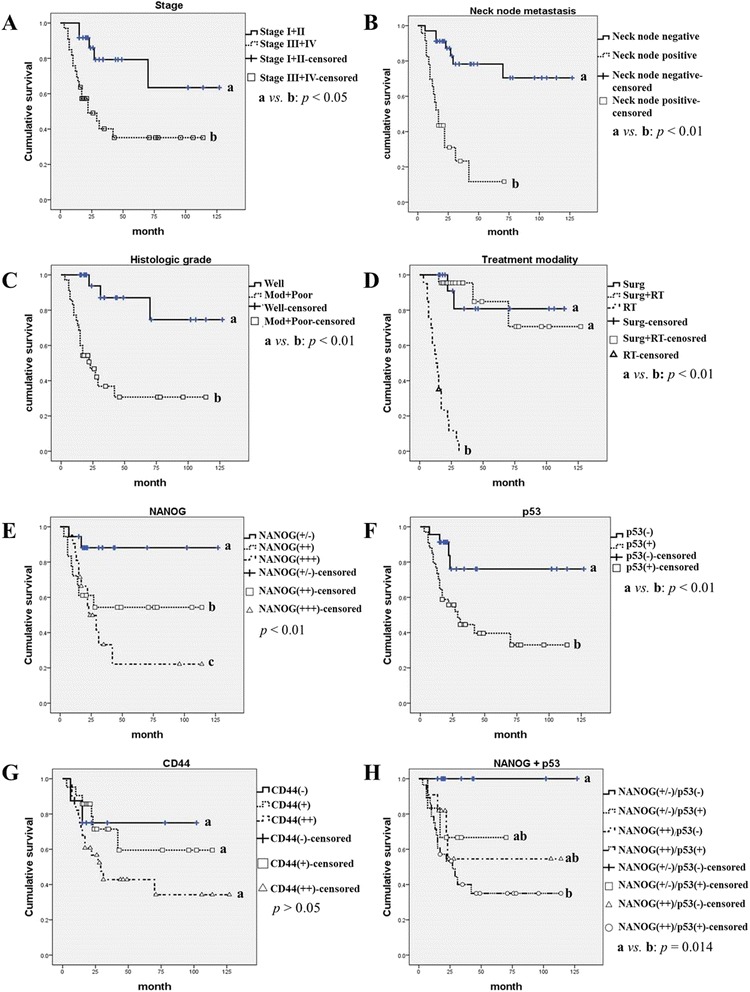Fig. 5.

The overall survival rate of OSCC patients according to clinicopathological tumor features, treatment modality, and immunostaining patterns of NANOG, mutant p53, and CD44. a Patients with late-stage tumors (stage III & IV) show significantly poorer survival rates (p < 0.05). b–d A positive association between the overall survival rate of OSCC patients and histopathological tumor grade, neck node metastasis, and treatment modality is observed. The well-differentiated OSCC group, negative neck node group, and surgical treatment group show significantly better long-term survival rates than the corresponding opposite groups (p < 0.01). e Enhanced expression of NANOG is associated with a poor survival rate; in particular, patients with strong or moderate expression of NANOG show significantly lower survival rates than those with weak or negative NANOG expression (p < 0.01). f Patients with mutant p53(+)-expressing tumors show a lower survival rate than those with tumors negative for mutant p53(−) (p < 0.01). g Enhanced CD44 expression tends to correlate with poor survival rates, but no statistical significance was found (p > 0.05). h OSCCs with co-expression of enhanced NANOG and mutant p53 [NANOG(++)/p53(+)] correlate with a significantly lower overall survival rate than those with weak NANOG and p53 negativity [NANOG(+/−)/p53(−)] (p = 0.014). Notably, there were no deaths in the 12 cases of NANOG(+/−)/p53(−) during the follow-up period. Different letters denote statistically significant differences between groups (p < 0.05)
